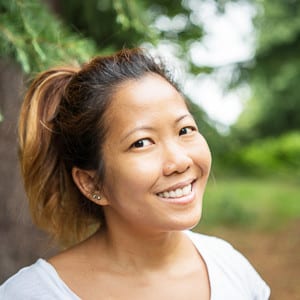We have created an illusion of linear progression, but life is really cyclical by nature
Here we go, stepping over the threshold of 2022 into yet another year of pandemic madness. Two years into the outbreak, and while it seems like we’re going around in circles, there is also a sense of moving forwards. As I write this, I’m sitting comfortably in an East London apartment, in the belly of one of the world’s largest Omicron outbreaks. After being held within the stringent borders of Singapore for almost two years, the brief glimmer into the outside world offers a much-needed shift in perspective. Covid is no longer as scary as it once seemed, and amongst the many friends and relatives who have had the unfortunate luck of catching it, the experience is often one defined mostly by the inconveniences of the rules and regulations they find themselves in between rather than the fear of the virus itself. I speak off course, from a place of privilege, and amongst a community of mostly vaccinated people. But as I step back and attempt to look at the situation from a place of objectivity, I wonder if Covid has taught us a thing or two about the true cyclical nature of our lives and our existence.
Our modern life, governed by a linearity that tells us our efforts should result in direct outcomes. By its logic, if we work hard, we are rewarded. We earn more, we get promoted, we gain success. And perhaps that’s why Covid has been so hard for us to swallow. We have followed the rules, donned masks, taken our vaccinations, and yet, we find ourselves each year in almost the same place. For those that have never truly connected to the cyclical nature of life, this experience can feel like being completely out of control. In a way, I can see why there is so much rage out there.
But if we take a moment and reflect, we know intrinsically that everything in life is cyclical. All things in life are born to die. Our bodies get stronger, more capable, our brains grow in capacity up to a peak, and then take their journey along the downward path of the bell curve. Day turns into night; night turns to day. Summer to fall, fall to winter, winter to spring and spring again to summer. Flowers bloom bright and beautifully, only to wilt and return to the earth that it once grew from. Nothing in life is linear! And this pandemic is forcing us more than ever to acknowledge this.
Integrating the lessons of yoga and meditation into our daily lives is the key to finding steadiness
So how do we navigate another year in this seemingly endless cycle of unknowns? My answer is integration! That’s right . . . all those lessons we learn on our yoga mat, it’s time to integrate them into real life. It’s one thing to have a yoga and meditation practice, it’s a whole other process to bring it into our day to day. It doesn’t matter how many years you’ve practiced on your yoga mat, how many hours you’ve spent meditating, how many books you’ve read. Integrating the lessons into the real world is ultimately the key to gracefully riding the highs and lows of the cyclical journey of life. Here are a few tips on how you can begin to do this.
Turn something routine into a mindful meditation every day
You may have heard this one mentioned many times in the past, like being mindful when you brush your teeth, or make your bed for example, but it’s hard to turn mundane, daily tasks into deep acts of meditation. So instead, identify something that you do every day that you enjoy, and see if you can slow that down into an extended moment in which you can sink deeply into presence. For example, if you enjoy cooking, slow down the act of making one of your meals. I do this usually when I make dinner at the end of the day. I take my time to prepare each ingredient. Look at each one, smell each one and notice the textures. I also enjoy taking care of my plants, so the act of watering them becomes a mindful process of observing the color, texture, the daily changes. Turning something routine into an act of mindful meditation helps us to connect more to the present micro-moments rather than the future outcome. It is the process itself that brings joy rather than the final product.
Use your commute as time for reflection
Sitting, staring out of the window of a bus or car, or at the blank spot on the wall on the opposite side of the train may seem like an inopportune time to reflect or meditate, but it’s an effective way to practice your inner reflection against a backdrop of continuous external distraction, and to recognize that while you have no control over what happens on the outside, your power is really on the inside. Setting up a nice and quiet space in your home, turning on some soft music, setting a comfortable pillow may be useful in the beginning, but if you’ve been meditating like this for years and you still find yourself responding to emails, watching Youtube, making calls, creating social media content while you’re on your daily commute, then perhaps it’s time integrate the image you have of meditation with the reality of what it means to be at peace.
Down time isn’t lazy time. Let go of your addiction to being busy
If you are someone who often responds to “How have you been?” with a “I’m so busy and tired,” especially when it’s because you tend to take on more than you can handle in your life, then you may have an addiction to being busy. If you are somehow gifted with additional time during the week and you immediately find new ways of filling that time with activities or responsibilities that keep you running low on fuel, you may want to re-evaluate your definition of growth, progress or success. Some of the greatest growth that we can experience happens in the slowest and stillest moments in our days. In the downtime is where we give our bodies the opportunities to heal, for revelations to emerge, and for the greatest learning. The downtime also allows us to transition from one activity to the next during our day in a way that is less frantic and hurried, allowing us to maintain a steady state of calm and grounding.
Do something that makes you happy everyday
It doesn’t have to be something big and dramatic, but doing something that makes you happy every day and being present in that moment allows us to grow joy from small, temporary moments. It helps us to let go of a bigger picture of what happiness and success look like, and to be more fluid in how that takes shape naturally.
Spend more time outside and in nature
There is no better way to connect to the cyclical and temporary nature of everything around us than to spend our time outdoors. The cycles of the day and night, the seasons, the tides, are all beyond our control. In many ways, man has overcome these cycles through our modern marvels that give us light whenever we desire, and to create comfortable living environments regardless of the weather. In some ways, perhaps many of us forget that we are not the main characters in other peoples’ stories because of how much control we normally have over our own lives. We forget our smallness and our insignificance. Spending more time in nature can help us to remember that we may not be able to stop the world from turning, but we can learn how to live within its chaos and its madness.
We all have an idea of what we want our lives to look like, not just for ourselves, but to the eyes and the perception of others. Many of us skillfully design our lives to take shape according to these dreams and goals. In many ways, the pandemic has stripped this from us and forced us to go back to the drawing board. But what if this is an opportunity to leave the canvas blank? Being comfortable in the unknown; stepping into emptiness and nothingness; riding the waves of creation and destruction. If we could better embody the cyclical nature of the universe and the temporary nature of all things, perhaps we can more gracefully ride the waves of the pandemic. We will rise and fall. It’s time to face the cycle.
—
If you’re looking to integrate your yoga practice and meditation into a more real-world setting, consider joining us on one of our retreats this year. We use various learning methods and tools to offer you an experiential and embodied understanding of the complex yoga philosophies. To see our offering, go to our Retreats Page.
About the Author – Julie Moksim is Co-Founder and Co-Director of Urban Yogis
I’m Singaporean by birth, global citizen by lifestyle, having lived in Indonesia, Egypt and India as a child and young adult, and later in the United States, Laos and Myanmar. My spark for yoga began while I was living in Boston in 2003, and grew into a calling to teach. After completing a teacher training in Bali with Rachel Hull, Anna Smallwood, Emil Wendel, James Newman and Dr. Sujatha Kekada in 2011, I moved to Laos and started a yoga cooperative called Luang Prabang Yoga. Both the yoga cooperative and the immersive retreat programs that I lead under Laos Yoga Retreats have put Laos on the map as a destination for yoga. I also co-owned a yoga studio in Myanmar between 2017 and 2019. My partnership with Kathy Gabriel and Urban Yogis has grown out of a collective purpose to share knowledge and bridge the gap between people of different cultures, languages and belief systems. When people come together from all walks of life, the opportunity for learning is boundless. Yoga has been an essential platform for these gatherings and for experiences that create more open-minded humans. Today, the biggest influence in my practice and teachings is Edward Clark of Tripsichore Yoga. He reinforces the importance of authenticity in how we express ourselves. I endeavor to make yoga an accessible practice to everyone, anywhere and everywhere.


